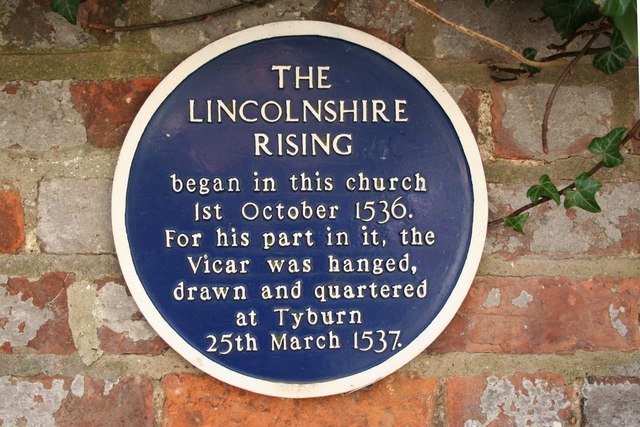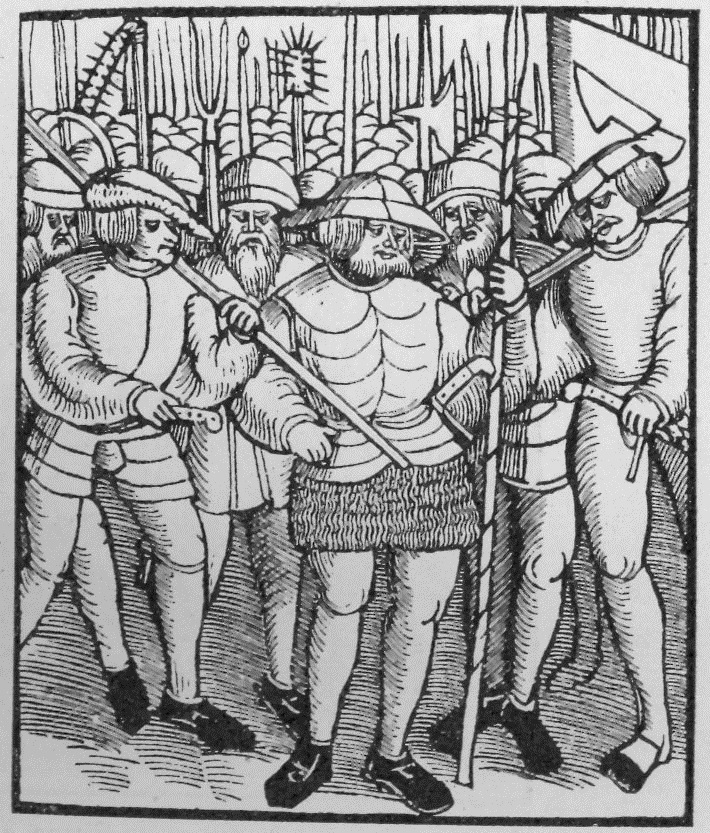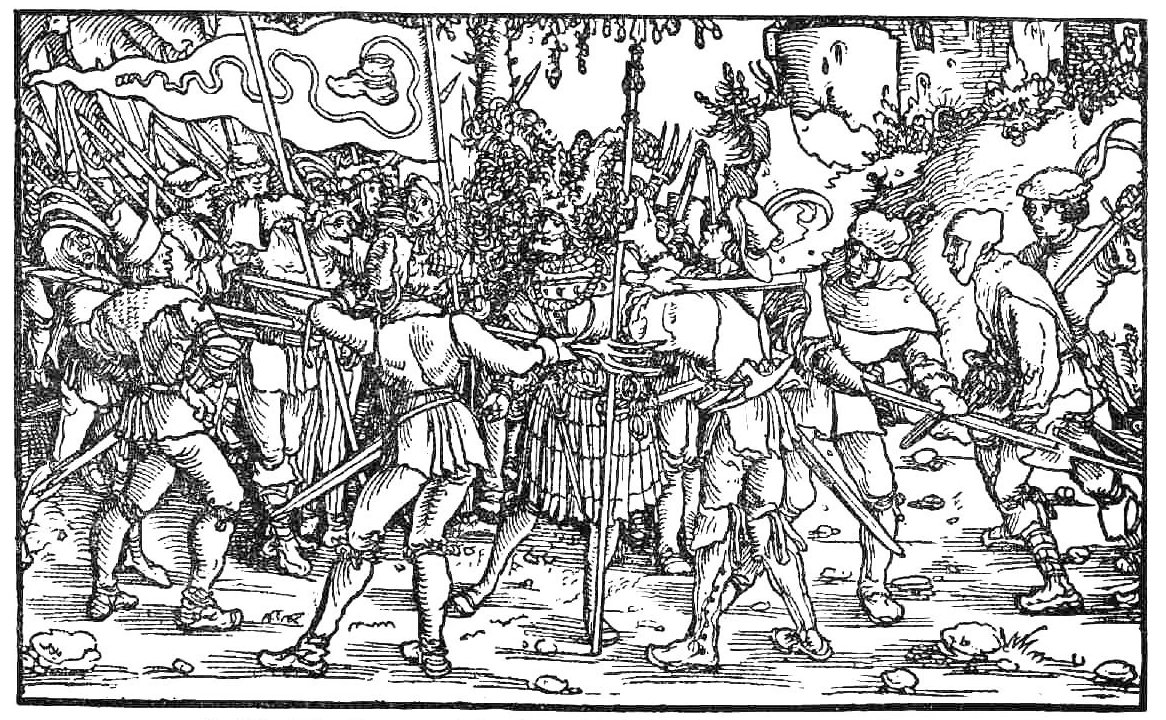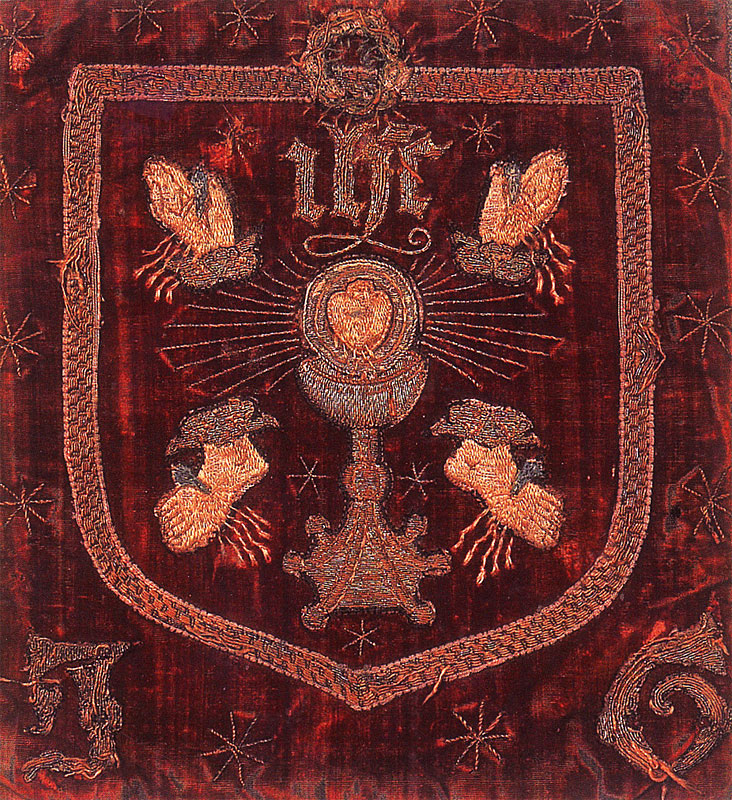Lincolnshire Rising
Gunpowder Warfare
Topic 4: Lincolnshire Rising
One series of events that did have a direct impact on Lincolnshire was the Lincolnshire Rising in 1536 and the Pilgrimage of Grace that followed immediately after.
Mass protest
The Lincolnshire Rising was a mass protest against religious reforms and the dissolution of the monasteries that began in Louth, spread to neighbouring towns and converged on Lincoln Cathedral, which was occupied.
Plaque outside St James’ Church, Louth, commemorating the beginning of the Lincolnshire Rising (Photo: Heritage Trust of Lincolnshire)
Executions
The King responded by sending the Duke of Suffolk with an army to put down the rising, and although most of the protesters dispersed before any violent confrontation, a number of the ring leaders were arrested and subsequently executed.
We have no illustrations of the Lincolnshire Rising, but these roughly contemporary engravings from Germany may give us a sense of what it looked like. 1525 pamphlet reproduced in Kulturgeschichte des deutschen Volkes in 1897
A 1539 woodcut by Als Petrarcameister
Learning Pack: The Repair of Hussey Tower
Hussey Tower in Boston is the remains of a once great manor house. Its owner at the time, Sir John Hussey, was executed by Henry VIII following the Lincolnshire Rising in 1536, after which Boston Corporation took ownership of the property.
Further rebellion
Some Lincolnshire nobles and survivors of the rising were also involved in the Pilgrimage of Grace in Yorkshire and Bigod’s Rebellion in Cumberland and Westmorland, and the murder of Thomas Trahern.
As a consequence there were further arrests and executions.
Badge worn during the Pilgrimage of Grace (now in Arundel Castle)




